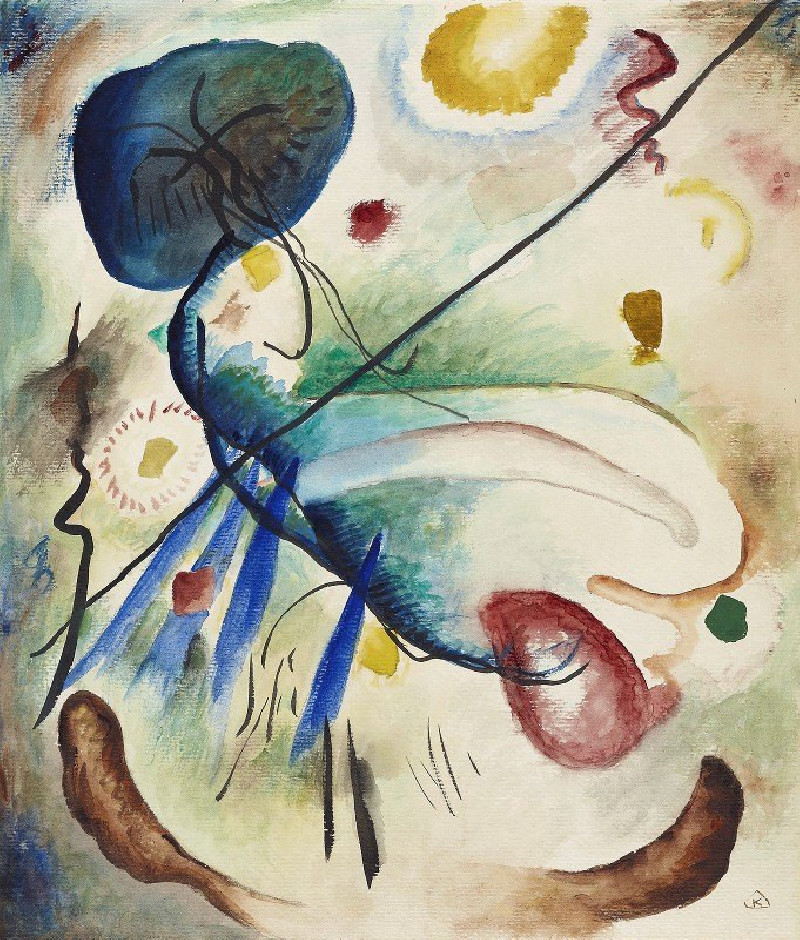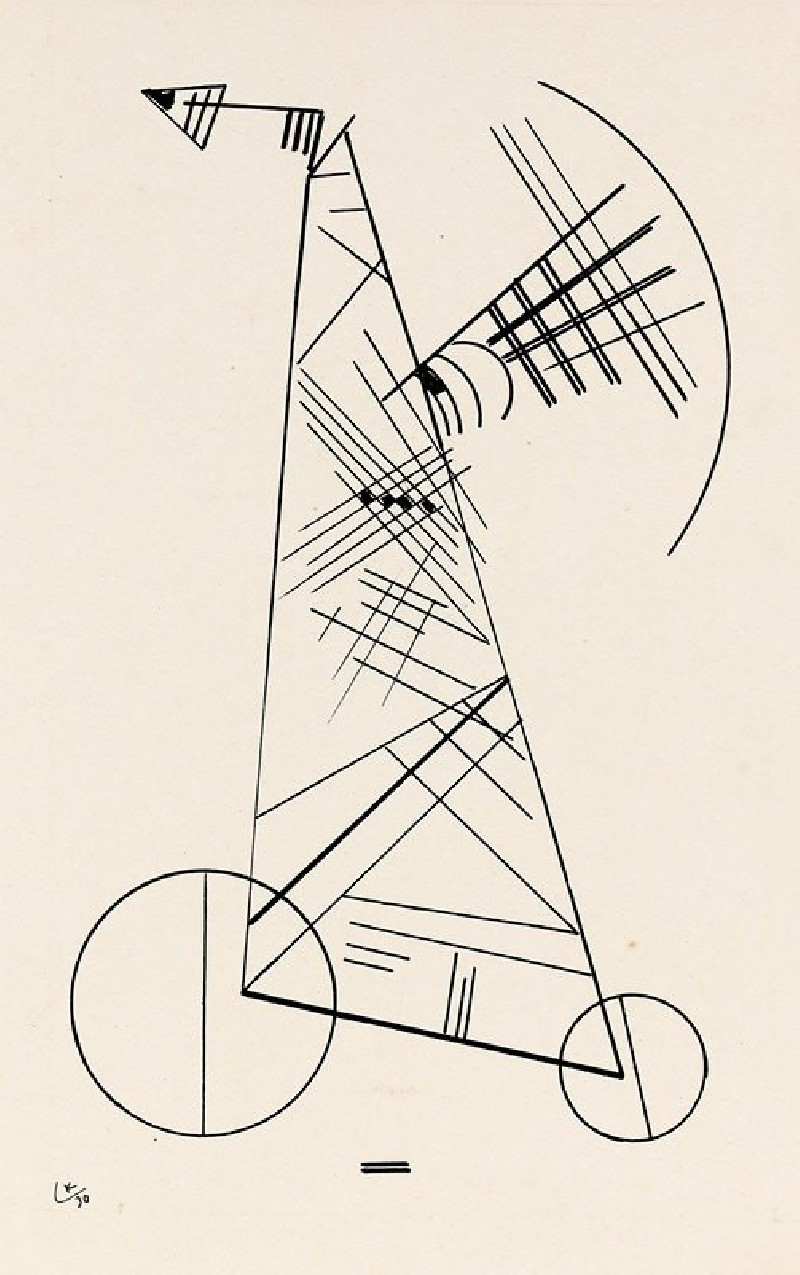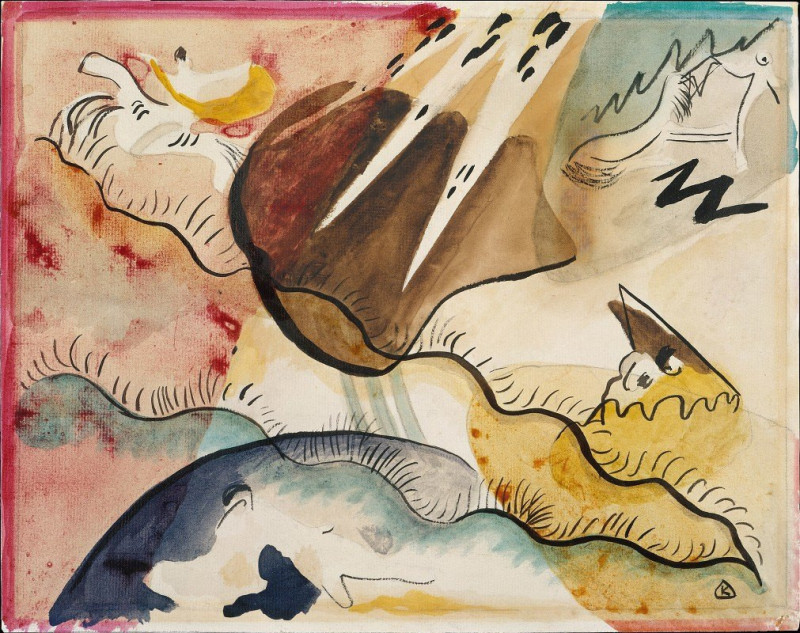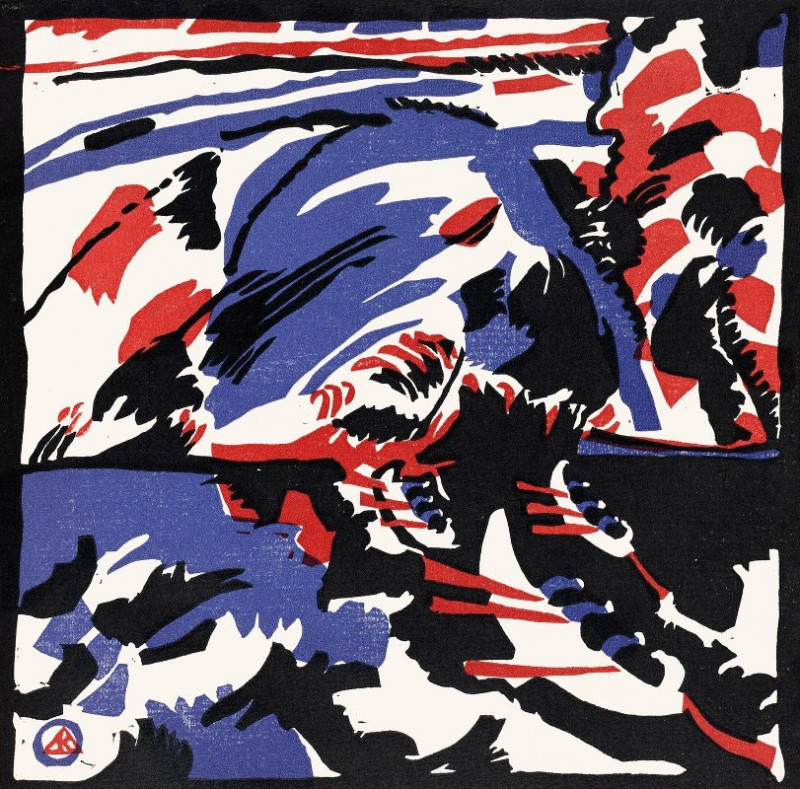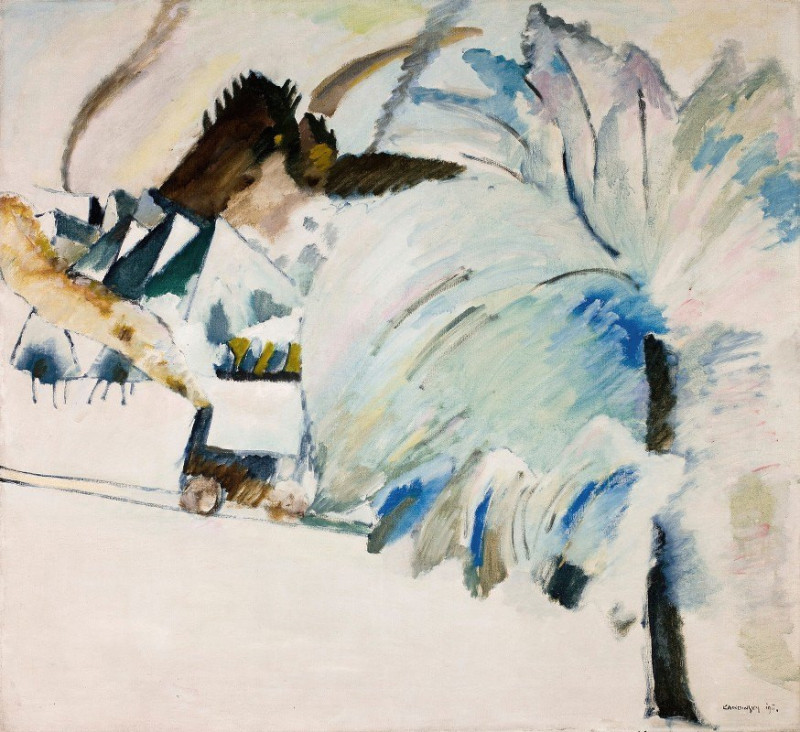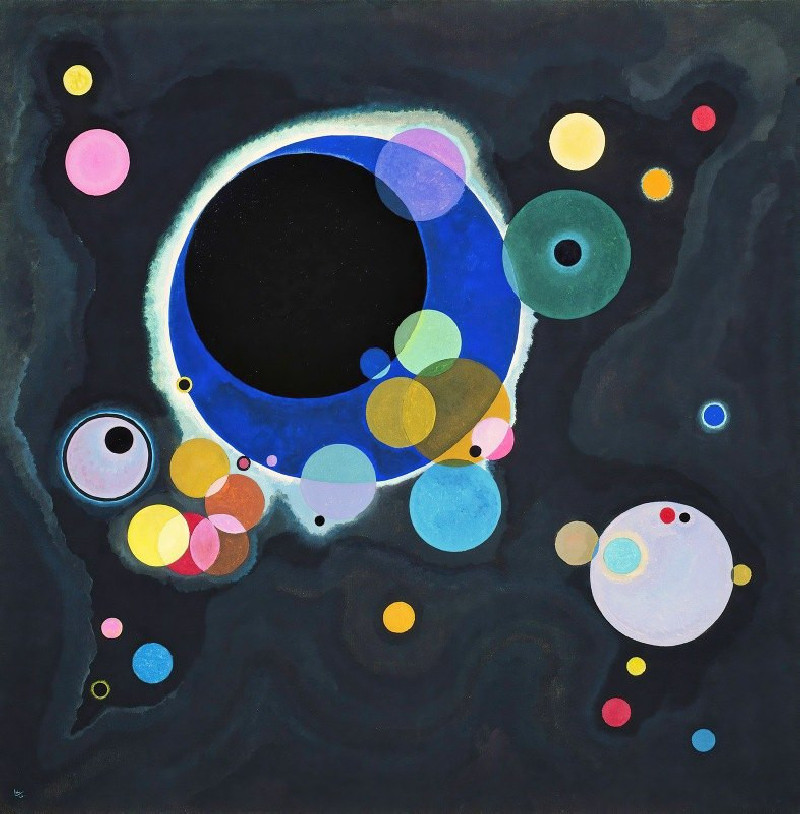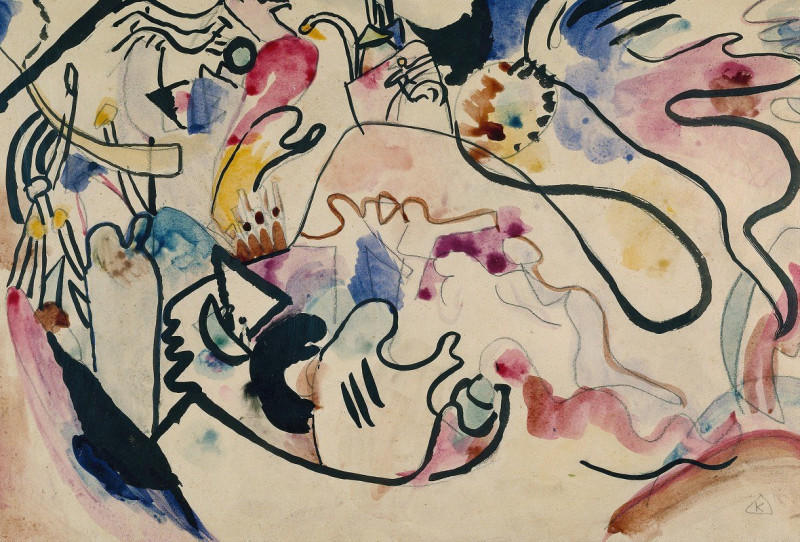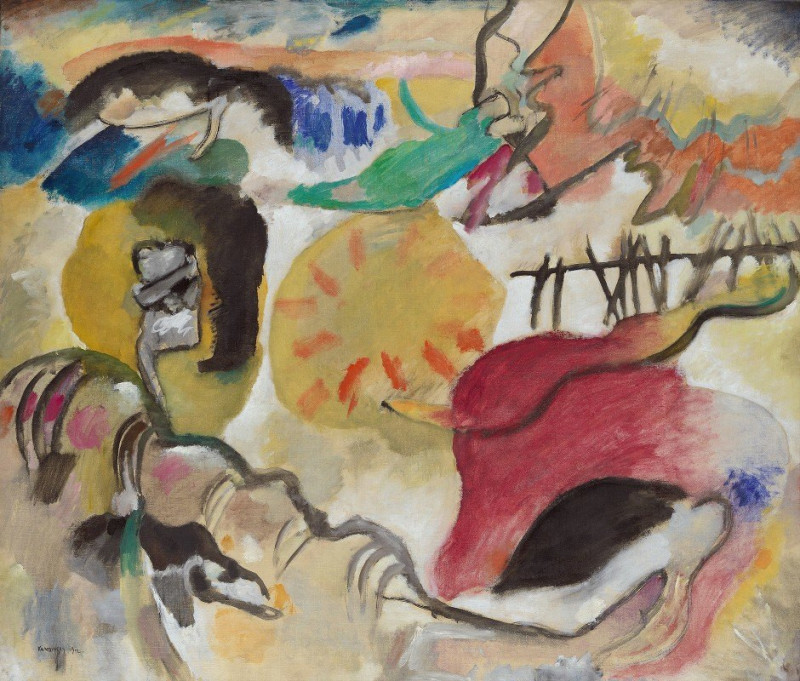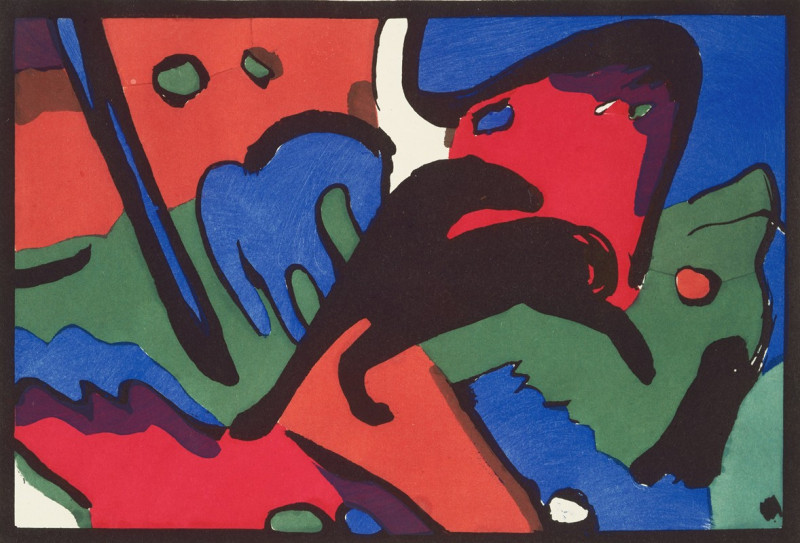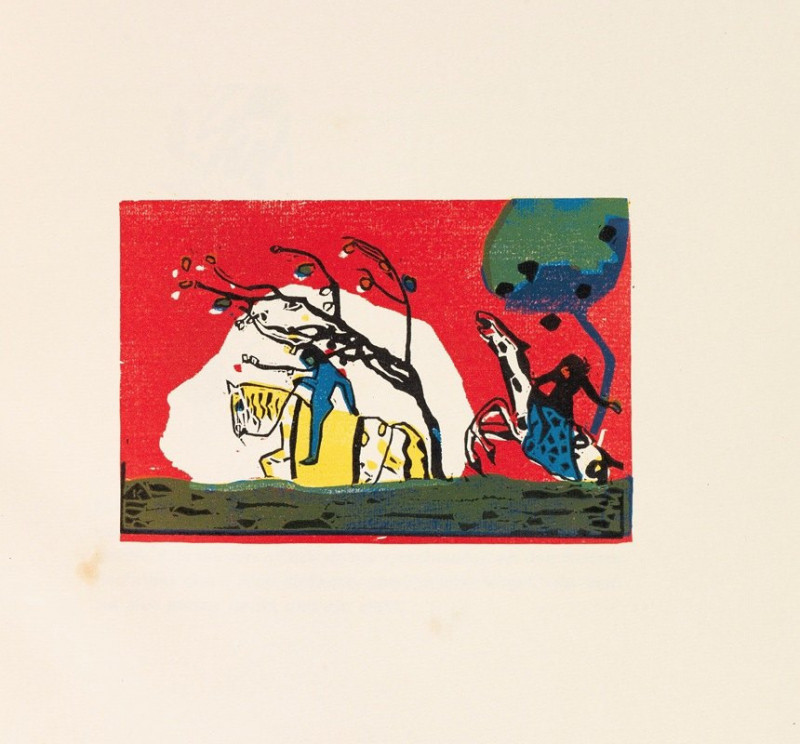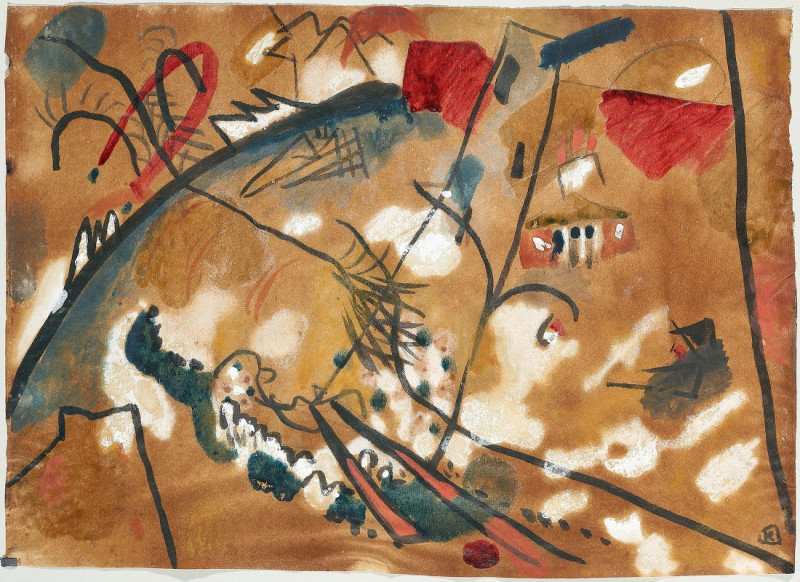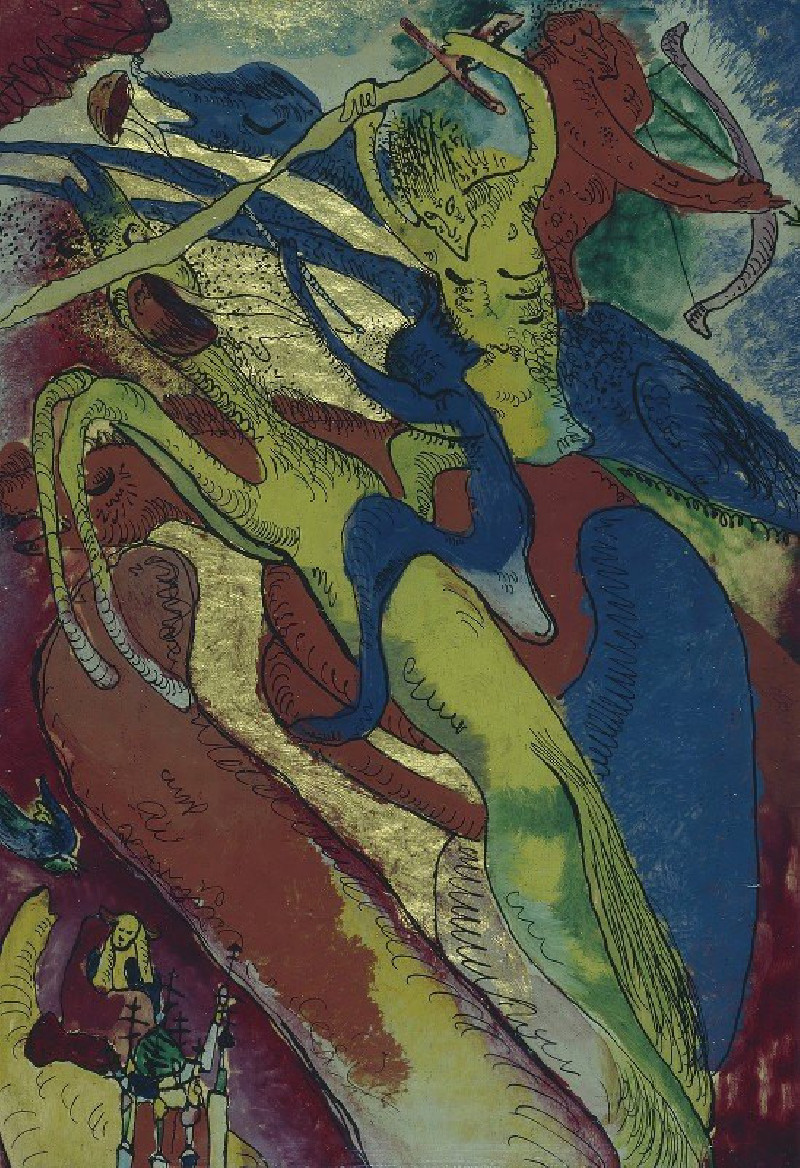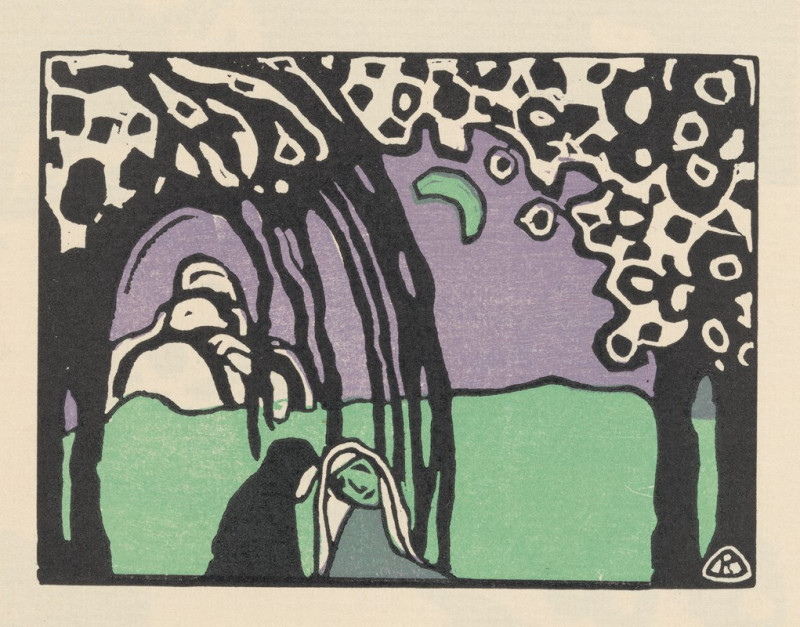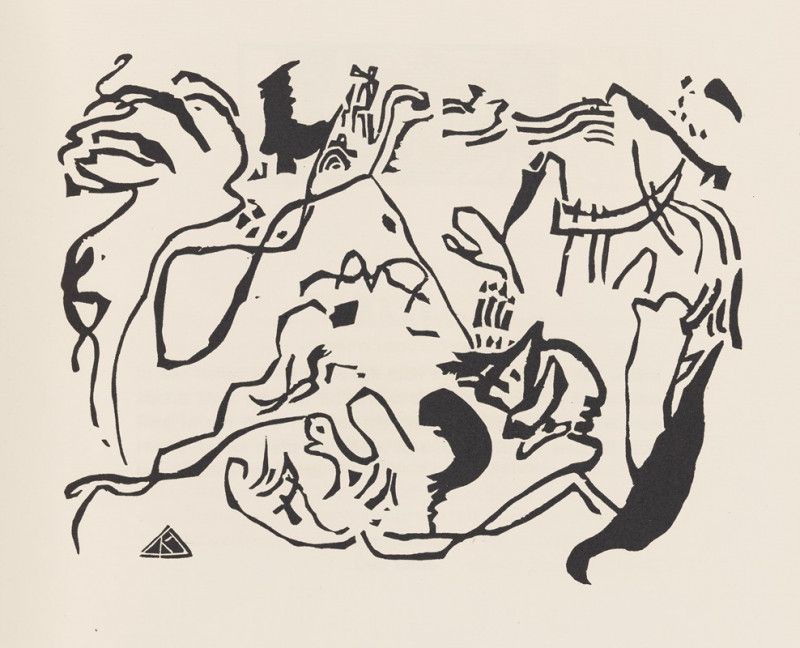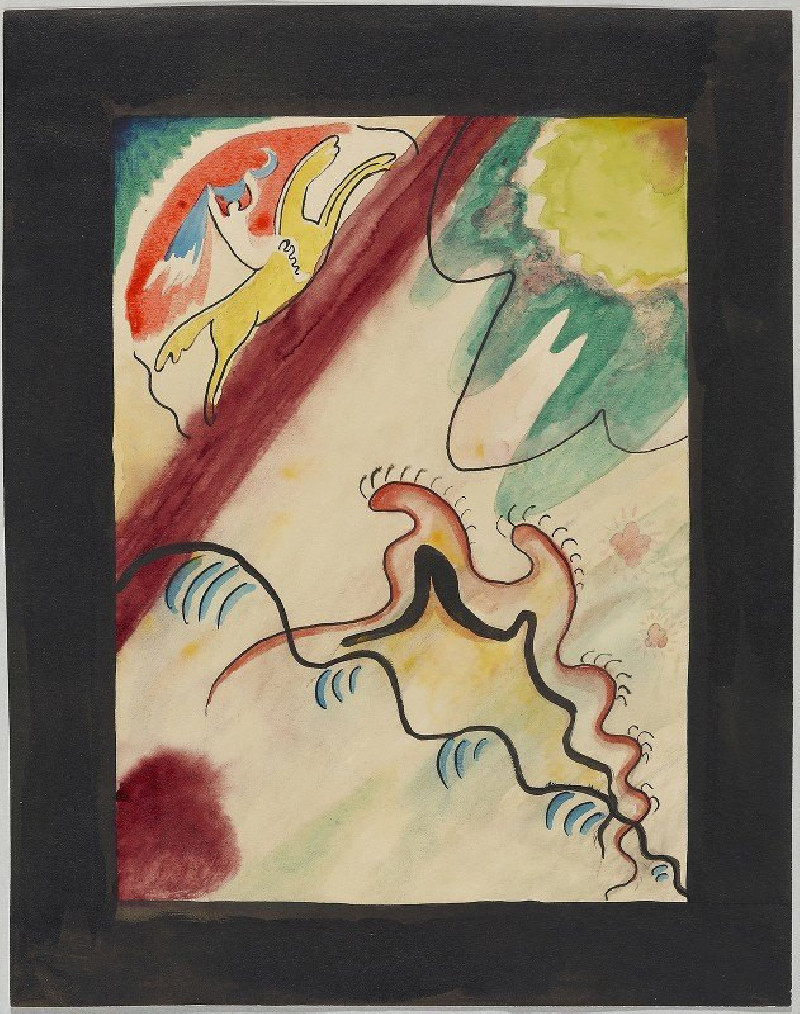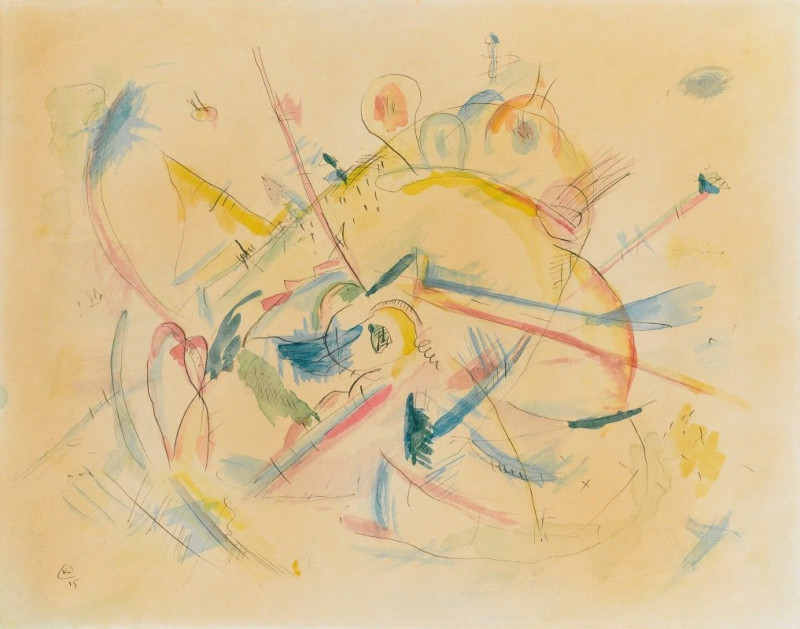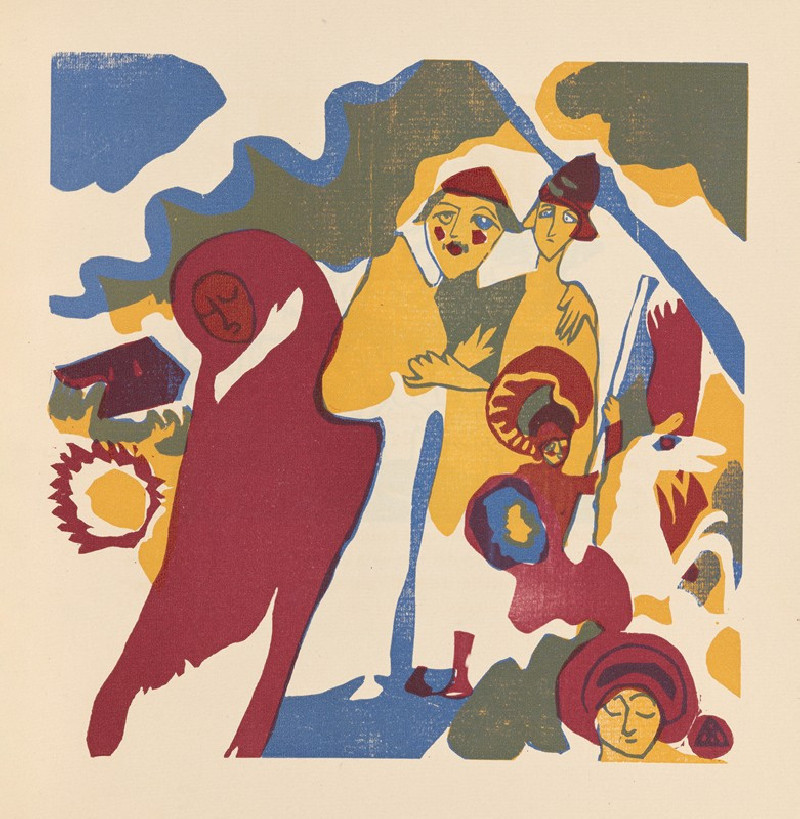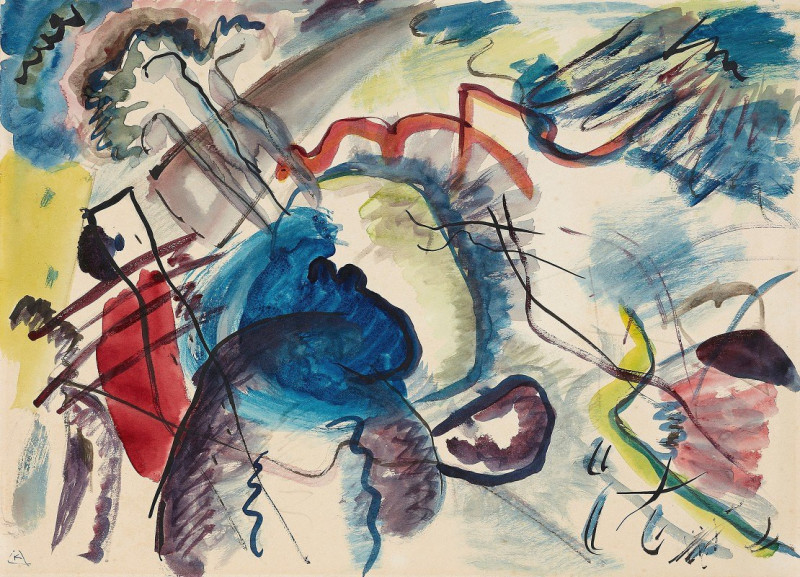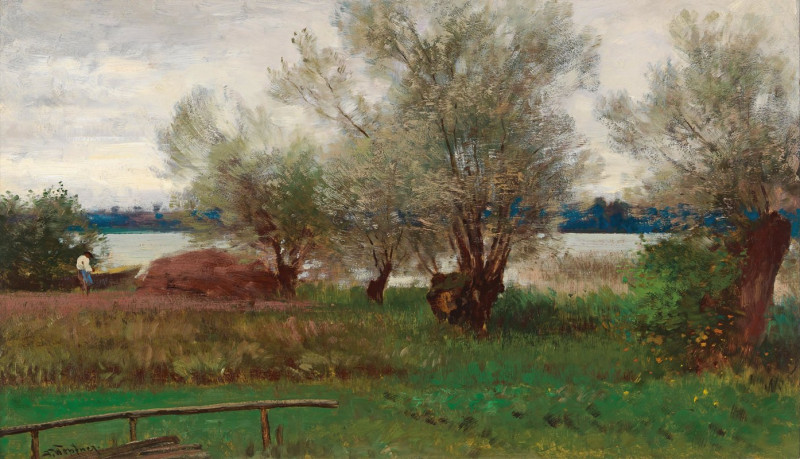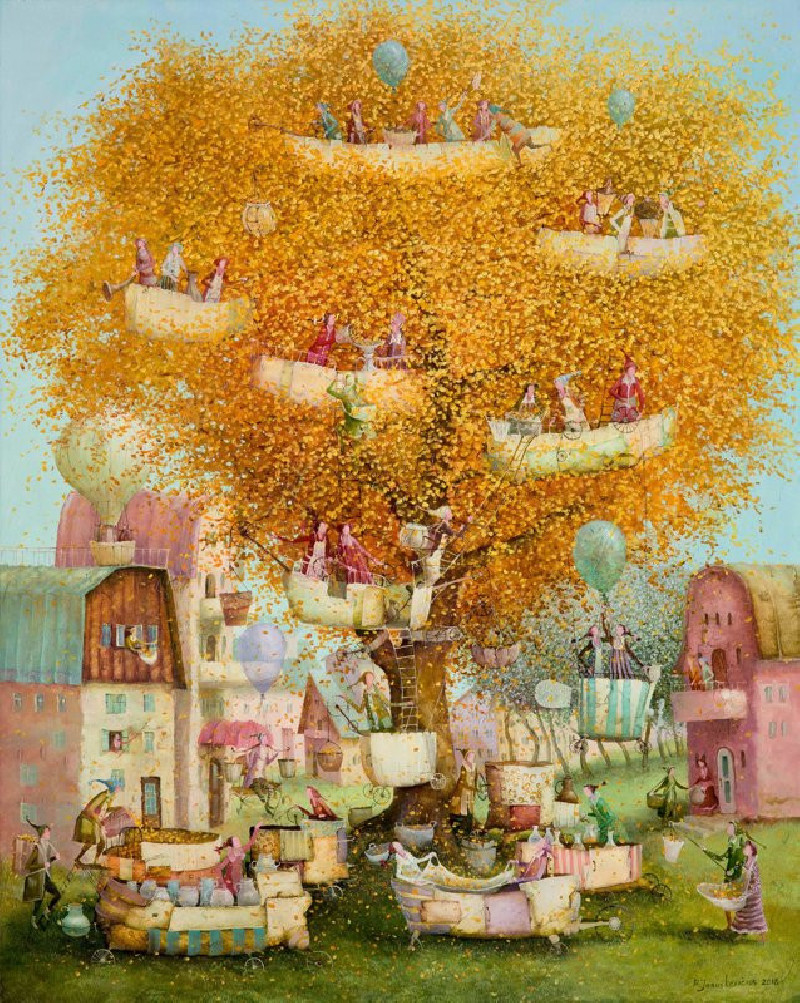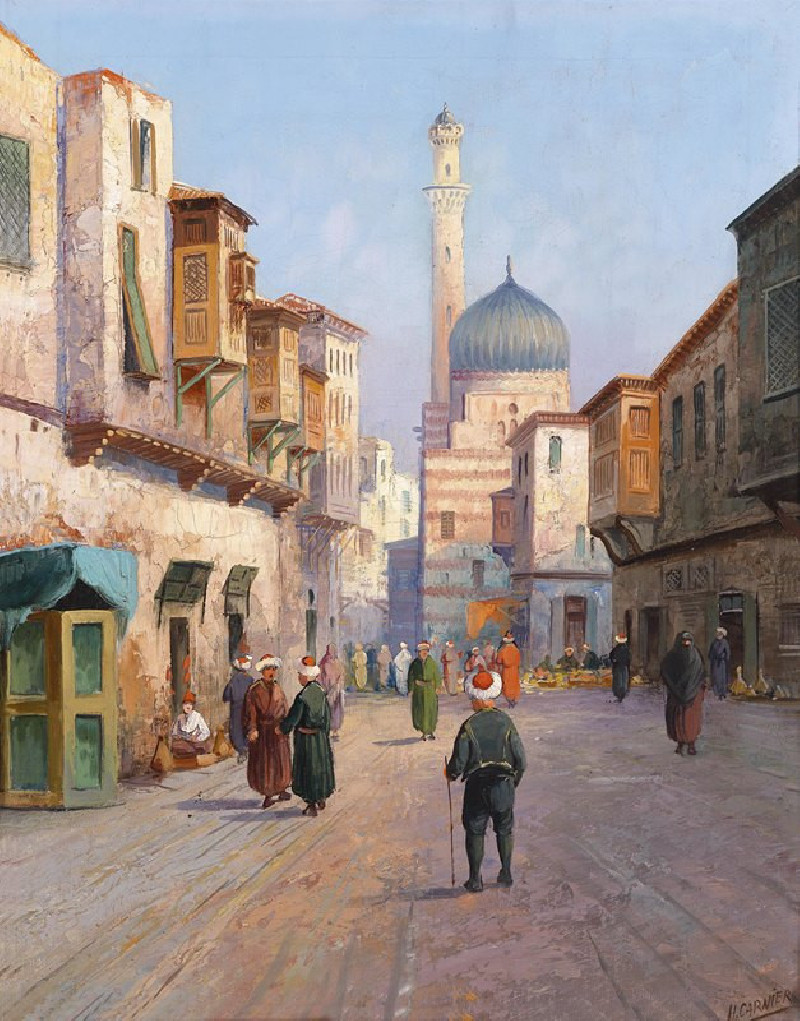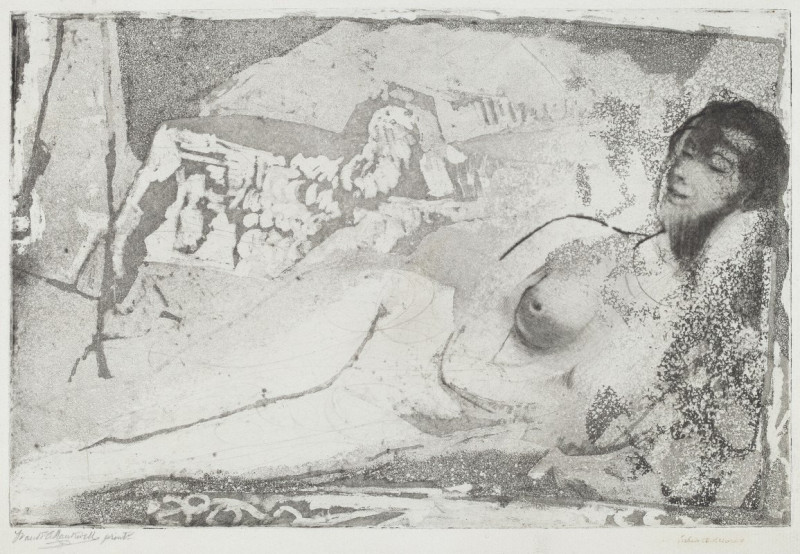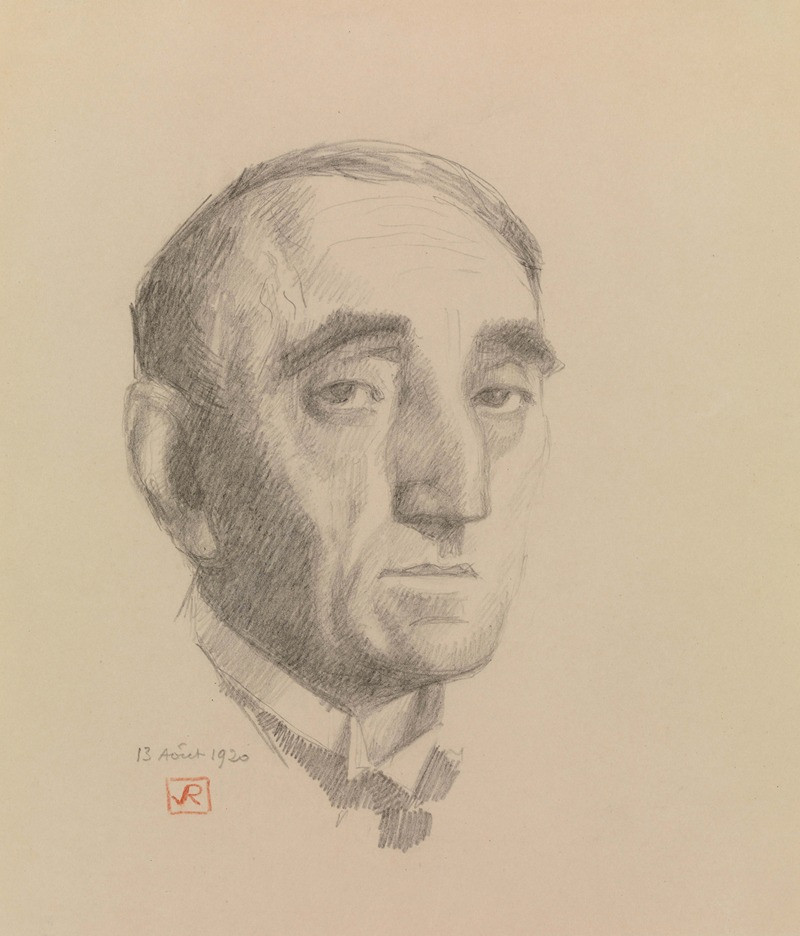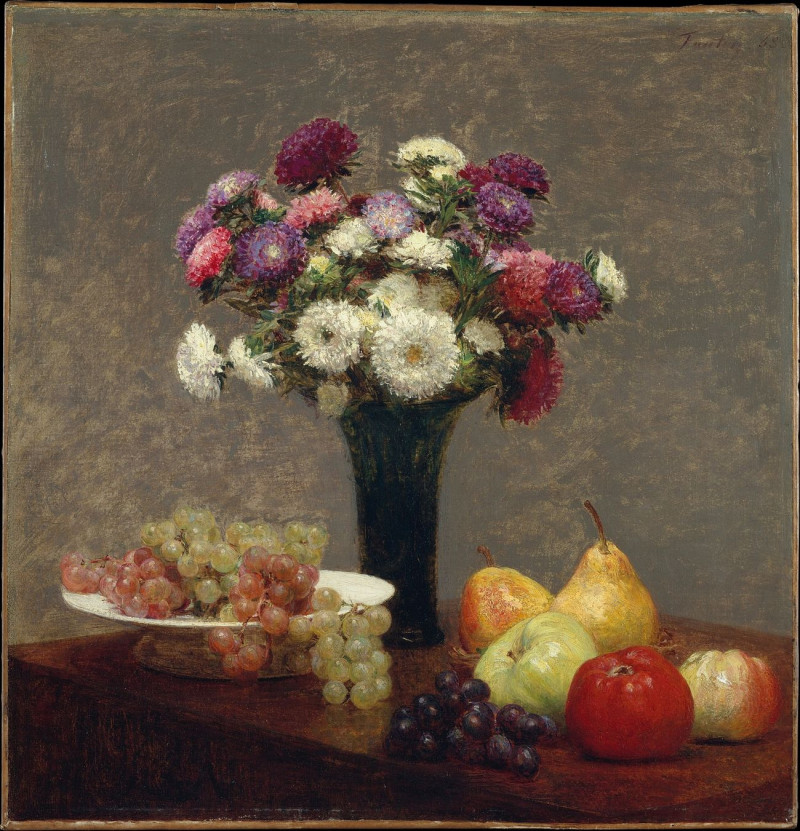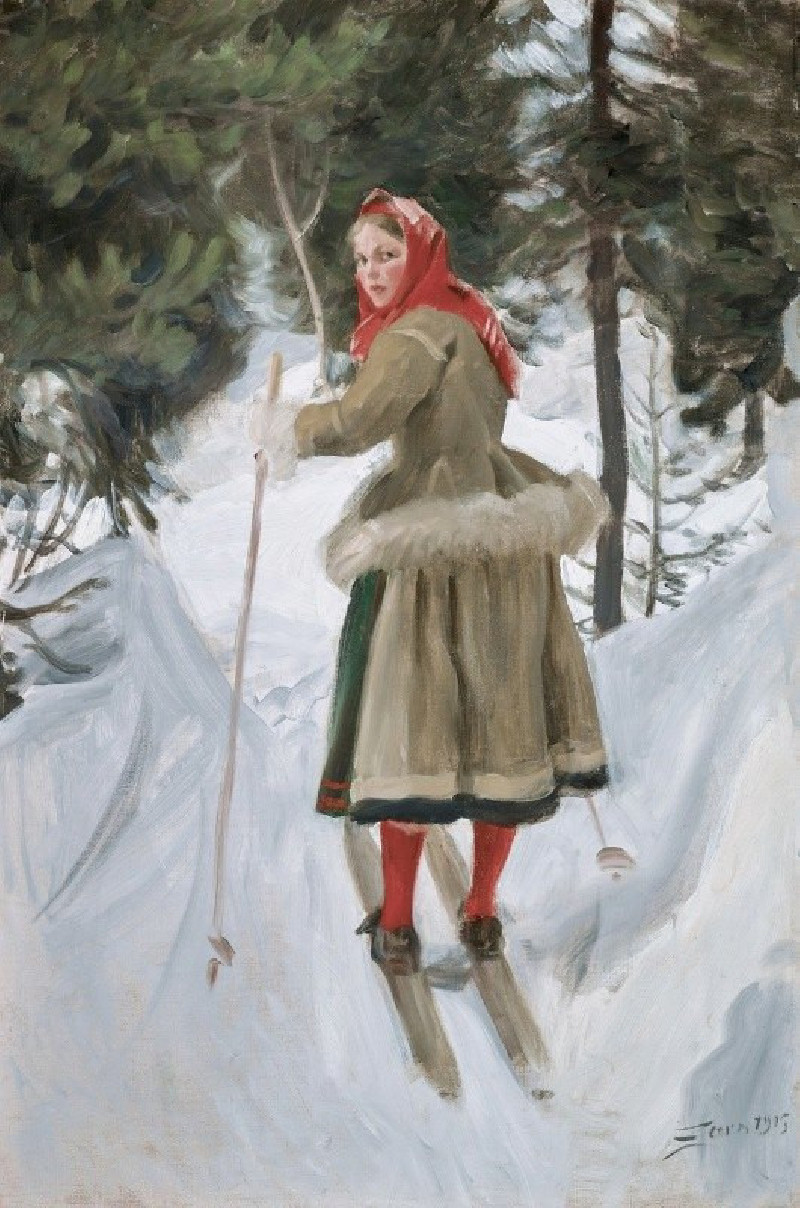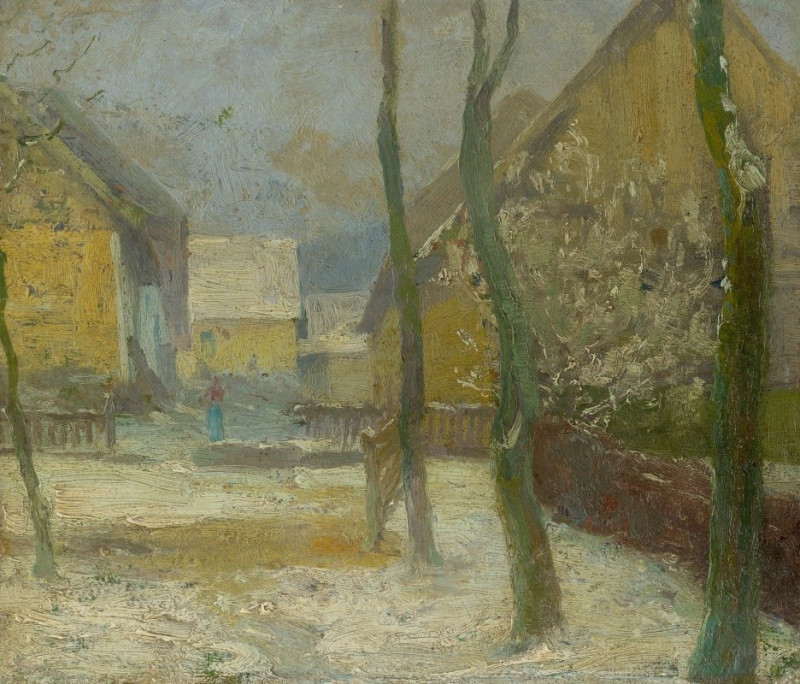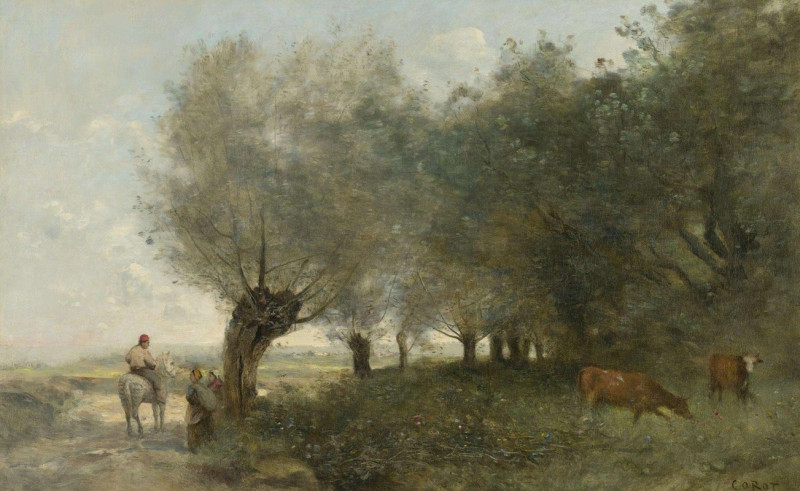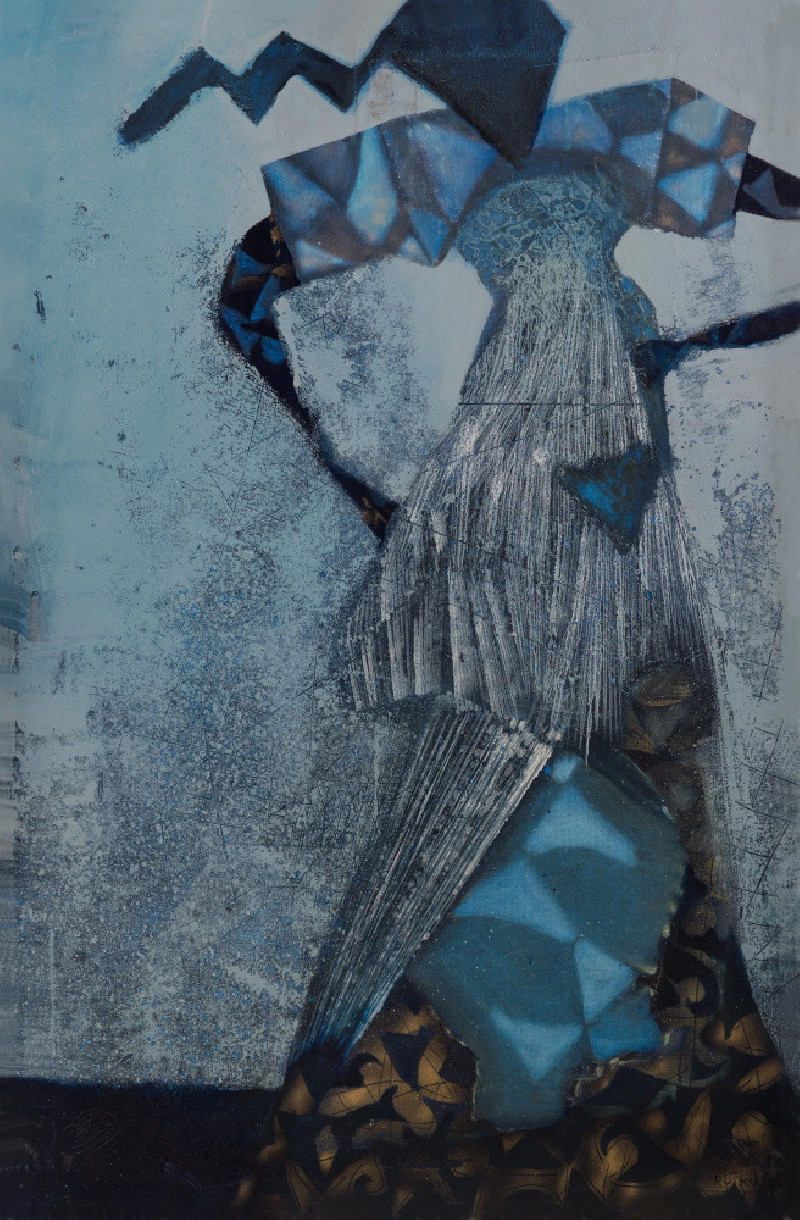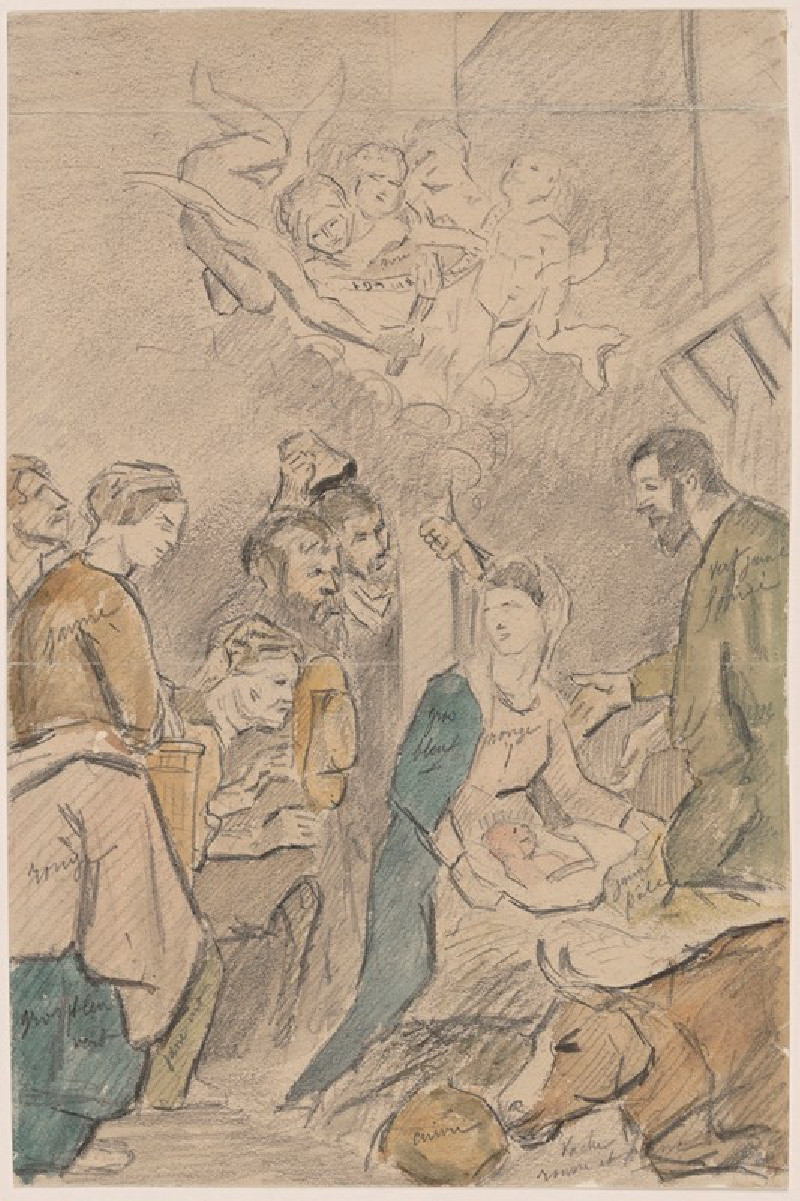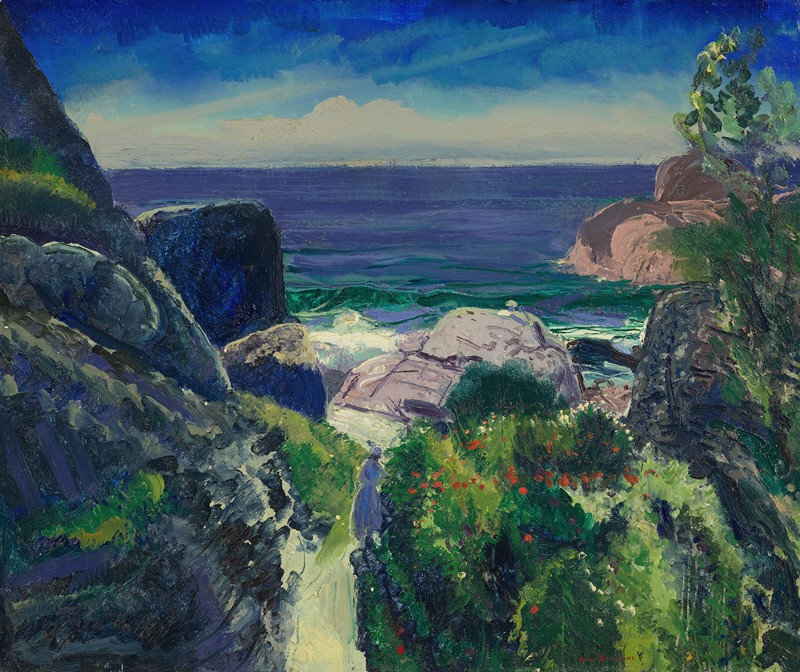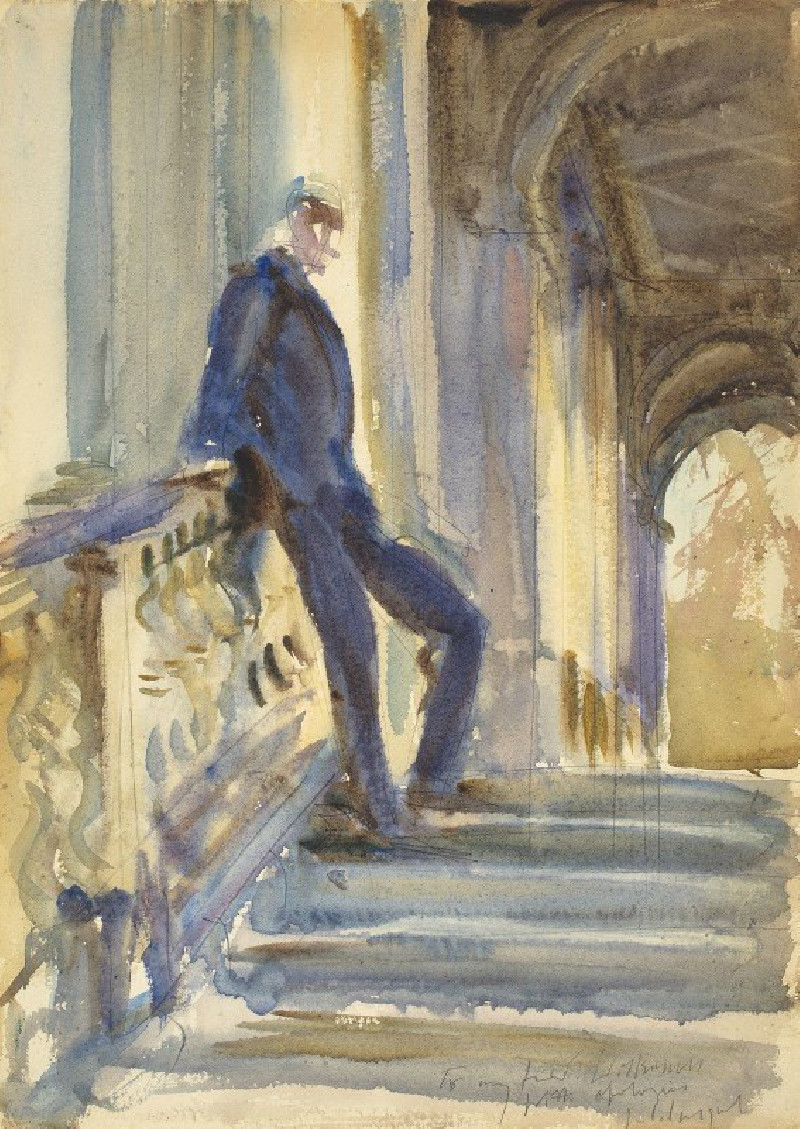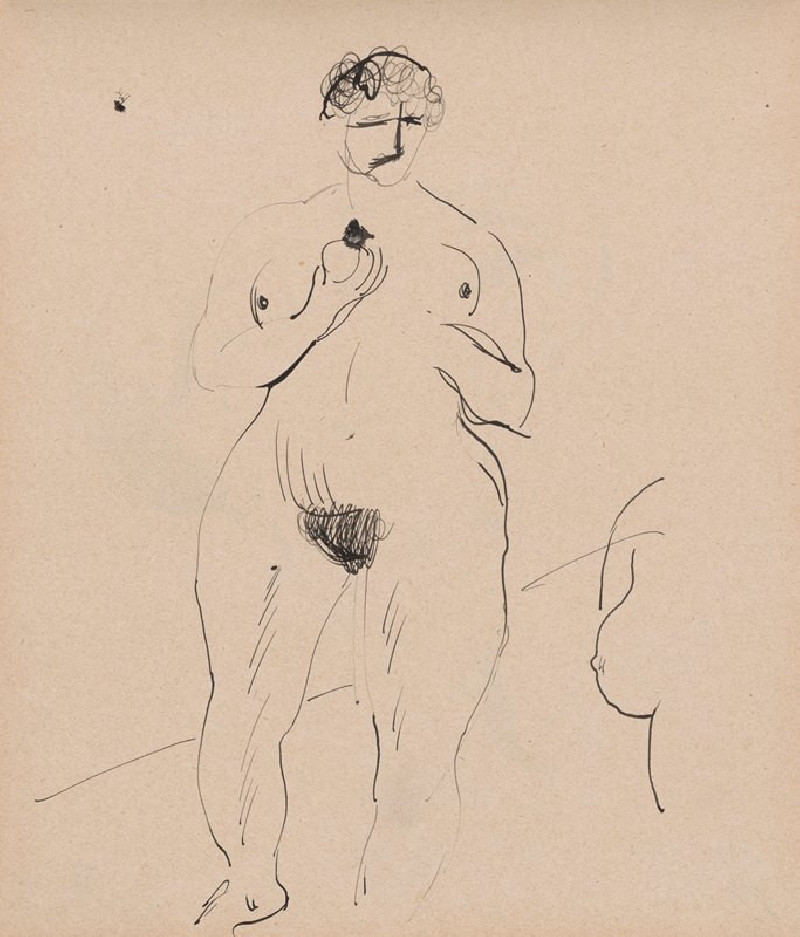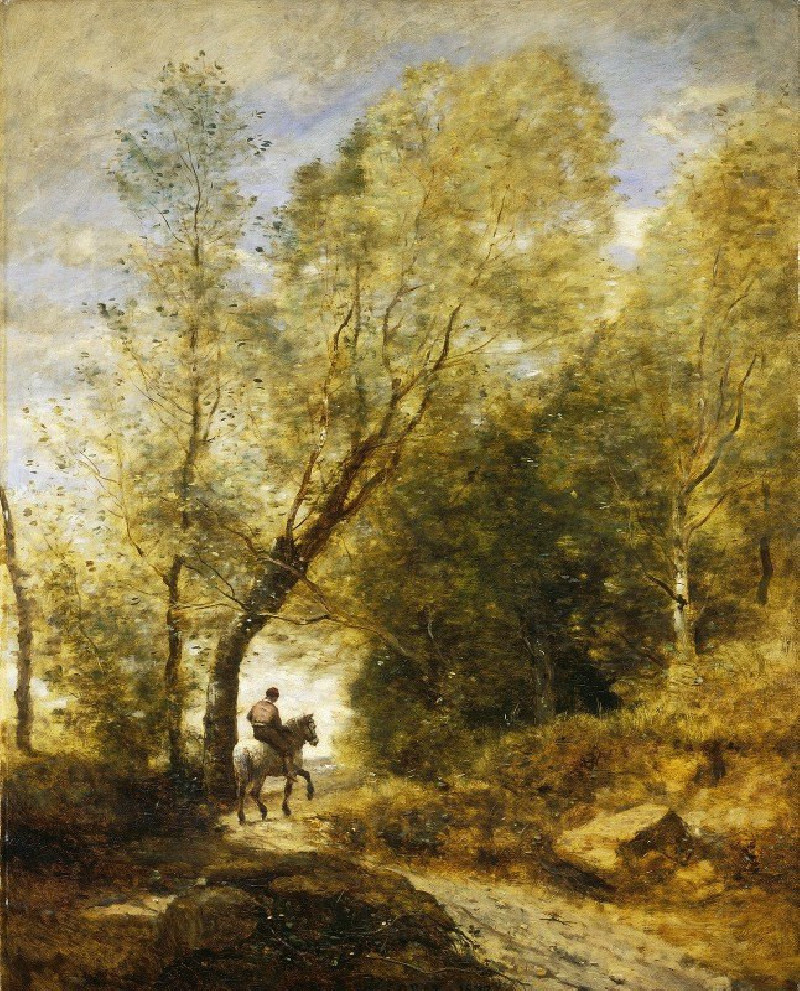Aquarell mit Strich (1912)
Technique: Giclée quality print
Recommended by our customers
More about this artwork
"Aquarell mit Strich" by Wassily Kandinsky, painted in 1912, is a vibrant example of his early exploration into abstract art. The painting is characterized by a fluid, organic interplay of colors and forms, reflecting Kandinsky’s belief in the emotional power of color and nonrepresentational art.In this work, there is a rich tapestry of shapes and lines that seem to float freely against a softly washed background. Dominant elements include a large blue shape that might evoke the sensation of a leaf or a petal, punctuated by a dark, branching structure that resembles veins or a tree fragment. This blue shape appears almost translucent, suggesting depth and layering in the composition.To the right upper corner, the viewer can see circular forms in yellow and other hues that could be interpreted as celestial bodies or simple abstract spots, adding to the composition’s dynamic nature. The sharp, black lines that crisscross the piece could be seen as connecting or dividing the elements, injecting a sense of motion and tension.The various blotches of color - reds, yellows, and greens - play a crucial role in the balance and rhythm of the artwork. They break up the dominance of the blue and add visual interest, possibly evoking emotions or resonating with the viewer on a subconscious level.
Delivery
Returns
Wassily Wassilyevich Kandinsky was a Russian painter and art theorist. Kandinsky is generally credited as the pioneer of abstract art. Born in Moscow, Kandinsky spent his childhood in Odessa, where he graduated at Grekov Odessa Art school. He enrolled at the University of Moscow, studying law and economics. Successful in his profession—he was offered a professorship (chair of Roman Law) at the University of Dorpat today Tartu, Estonia)—Kandinsky began painting studies (life-drawing, sketching and anatomy) at the age of 30.

